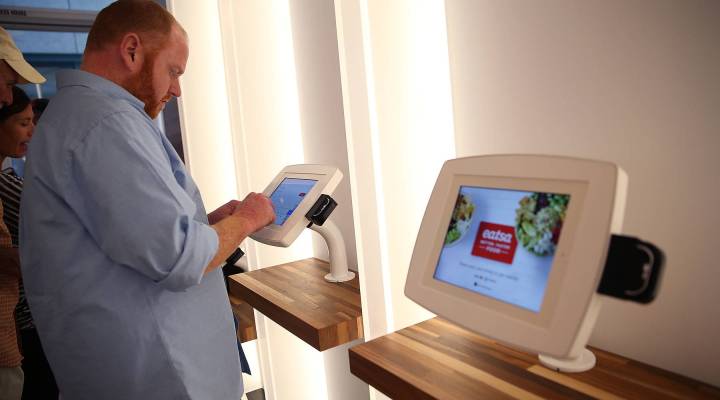
Why your robot restaurant might get sued
Share Now on:
Why your robot restaurant might get sued

About half a dozen kiosks stand ready to take your order at Eatsa in midtown New York. With the help of technology, the fast-food startup basically eliminated the need for front-of-the-house staff. Hungry New Yorkers walk in, key in their order, pay and then pick up their order from one of the nearby cubicles. No human interaction necessary.
That is, unless you are blind.
A lawsuit filed in New York yesterday alleges that Eatsa failed to make its kiosk accessible to blind and low-vision customers. The technology is available on iPads, which are part of Eatsa’s kiosks, according to Rebecca Serbin, an attorney for Disability Rights Advocates, a nonprofit organization that filed the lawsuit. Eatsa just opted not to use it in its restaurants, Serbin told Recode, who first reported on the suit.
“We are surprised by this action by DRA. We are strong supporters of the rights of the visually impaired and have served many visually impaired customers since we opened our first Eatsa in 2015,” company founders Scott Drummond and Tim Young said in a statement provided to Marketplace.
They pointed out that at each location, there is a host to assist customers if they run into trouble.
“[A]ll of our technology is designed to be compatible with the appropriate assistance features. We regret that the DRA did not spend time with Eatsa’s staff before taking legal action and hope to bring them satisfaction through a more detailed demonstration and understanding of our service,” they said. “We truly think there is some error in their understanding of the eatsa technology and service and look forward to working through this amicably so we can continue providing a great service to all of our customers.”
The complaint alleges that the button to request the host’s assistance is also located on the iPad and, thus, is not easily accessible. It suggests that Eatsa add on a Braille keyboard or enable customers to access the iPad’s phone jack, which would enable vision-impaired customers to place an order.
Automation continues to be highly contested issue as restaurants rely more on technology. Last year, McDonald’s announced that it would introduce touch-screen ordering in some of its stores.
Even as the burger giant shifts toward automated ordering, CEO Steve Easterbrook has assured shareholders that McDonald’s “will always have an important human element.”
“Frankly, technology is something that our customers are embracing,” he said during the 2016 shareholder’s annual meeting. “We want to adapt to that. It is not actually meant to be labor replacement. We can just reapportion that labor into that more service-oriented roles.”
There’s a lot happening in the world. Through it all, Marketplace is here for you.
You rely on Marketplace to break down the world’s events and tell you how it affects you in a fact-based, approachable way. We rely on your financial support to keep making that possible.
Your donation today powers the independent journalism that you rely on. For just $5/month, you can help sustain Marketplace so we can keep reporting on the things that matter to you.


















